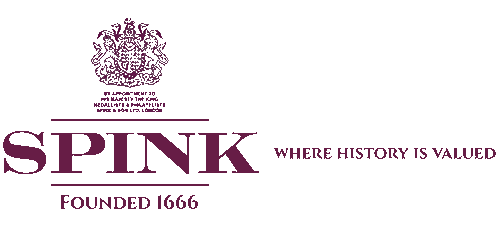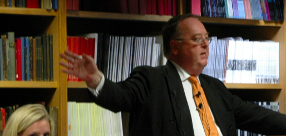
Auction: 14001 - Orders, Decorations, Campaign Medals and Militaria
Lot: 57
A Rare Second War 'Normandy Operations' D.S.M. to Able Seaman D.E. Halladay, Royal Navy, For His Gallantry in the Destruction of an Enemy Torpedo off “Juno” Anchorage
Distinguished Service Medal, G.VI.R. (A.B. D.E. Halladay, C/JX. 353658), extremely fine
D.S.M. London Gazette 13.3.1945 Able Seaman Donald Edward Halladay, C/JX.353658
The Recommendation, dated 5.8.1944, states: ‘For the recovery of a circling torpedo from the centre of Juno anchorage adjacent to “Cap Tourane”, and for towing it away and destroying it by gunfire.’
C/JX.353658 Able Seaman Donald Edward Halladay, D.S.M., a native of Northampton, served during the Second World War in Landing Craft Gun (Large) No. 1, armed with two 4.7-inch guns, manned by Royal Marines, and several 20mm. Oerlikons. One of Halladay’s shipmates, Richard Blyth, wrote an account of No. 1’s part in the Normandy operations, which also makes direct reference to the recovery and destruction of the enemy torpedo: ‘When we got to Sword Beach [on D-Day], it seemed as though every gun ever made was firing at the same time. You could hear the 15-inch warship shells going overhead, which sounded like a steam train. I could hear the Belfast’s 6-inch guns fired in anger and L.C.G. (L.) 1 was firing at the gun emplacements that were attacking our forces going ashore. Having a flat bottom and shallow draught, we were able to get quite close ashore, so we could see more where the firing was coming from. Our skipper was quite a huntsman, as every time we went into action he blew his hunting horn and said “Tally Ho!”
We were firing for nearly four days continuously, until the beachhead was well established. We would re-arm our craft then go along the beach where we were needed and then started firing again, sometimes 5 or 6 miles inland. We had a Field Officer ashore who was watching the shortfall and who sent back corrections to the gun crews.
As we progressed we came to Le Havre, where the Germans were hauled up of a night time, and we had what was called the “Trout Line” which was a line of L.C.G’s and L.C.F’s in line from Le Havre to Arromanches. At night, “Jerry” came out to cause havoc on one-man torpedoes; they also had high explosive remote controlled motor boats, with which they tried to get us. They moved at about 35 knots.
One day we had been doing an indirect shoot for the Army, and as we arrived back at the harbour of Arromanches, our look-out saw a spent German torpedo floating in the harbour - towards the end the Germans adapted the torpedoes to float instead of sink, so that it acted like a mine. A Marine Officer and two sailors [Halladay and another] got in a small boat and went out to it. One of the sailors went over the side with a rope, dived down and secured it, and swam back to the small boat and then back to our craft and towed it out of the harbour for about a mile, then blew it up with gun fire. The sailors were recommended for the Distinguished Service Medal (D.S.M.). When we got back in the harbour all the ships and craft saluted us with sirens and klaxons blaring.
We went out on D-Day and came back in September, having done 4 hours on, 4 hours off, 24/7. At that time we had a refit and more exercises, then the Support Squadron Eastern Flank (S.S.E.F.) was formed and we went out to Walcheren, Holland.’
Richard Blyth later submitted an account of No. 1’s part in this operation on 1 November 1944, a disastrous action in terms of losses for the S.S.E.F., nine craft being sunk and nine others seriously damaged, with a total loss of 172 killed and 200 wounded. However, the Walcheren landings witnessed great gallantry on the part of the landing craft crew, and a total on 1 D.S.O., 23 D.S.C.s, 2 C.G.M.s, and 27 D.S.M.s were awarded. Of No. 1’s fate, Blyth states: ‘In the Northern Group, L.C.G. (L.) No. 1 went in with her guns blazing independently and closed to 600 yards in spite of being hit three times by shells. Now she got hit several more times and then came the big one, which hit the bridge - there was a tremendous explosion. Our skipper, Lieutenant Ballard, R.N.R., was wounded. The shell took the compass from his hand before it exploded, then another shell blasted away the compass pedestal and voice-pipe. All the officers were now wounded and the craft came to a stop with two dead and 20 wounded. The survivors were rescued by L.C.S. 510. L.C.G. (L.) No. 17 tried to take No. 1 in tow, but the stricken craft sank. The skipper of No. 17, Lieutenant Scammell, received wounds coming to No. 1’s assistance, wounds from which he died.’
Able Seaman Halladay received his D.S.M. at a Buckingham Palace, 6.11.1945.
Subject to 20% VAT on Buyer’s Premium. For more information please view Terms and Conditions for Buyers.
Sold for
£800




